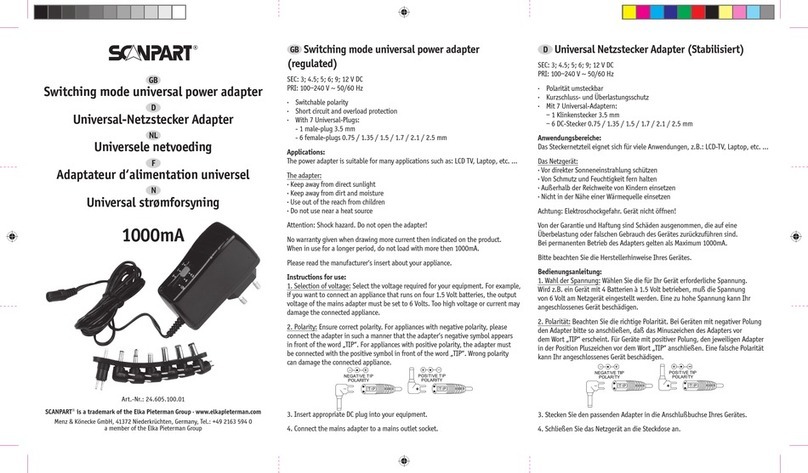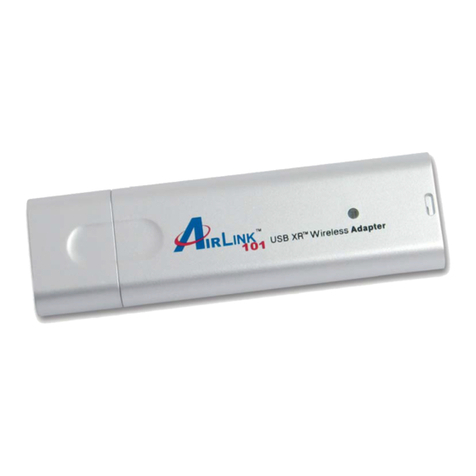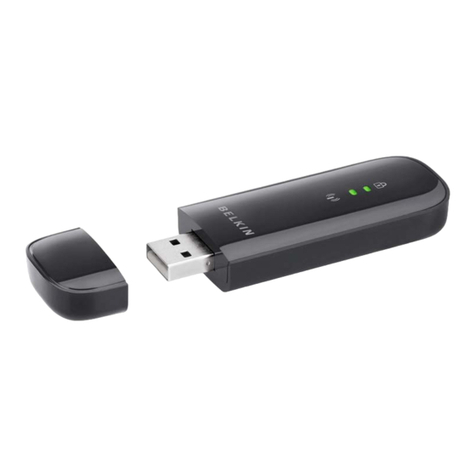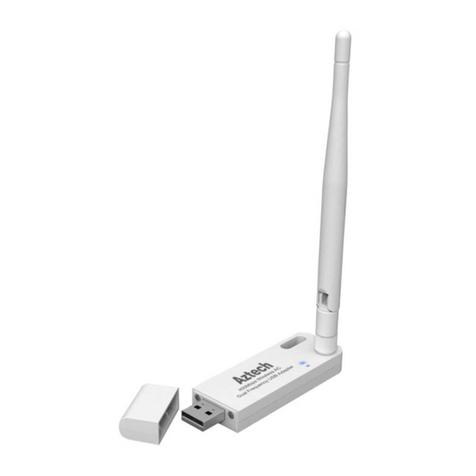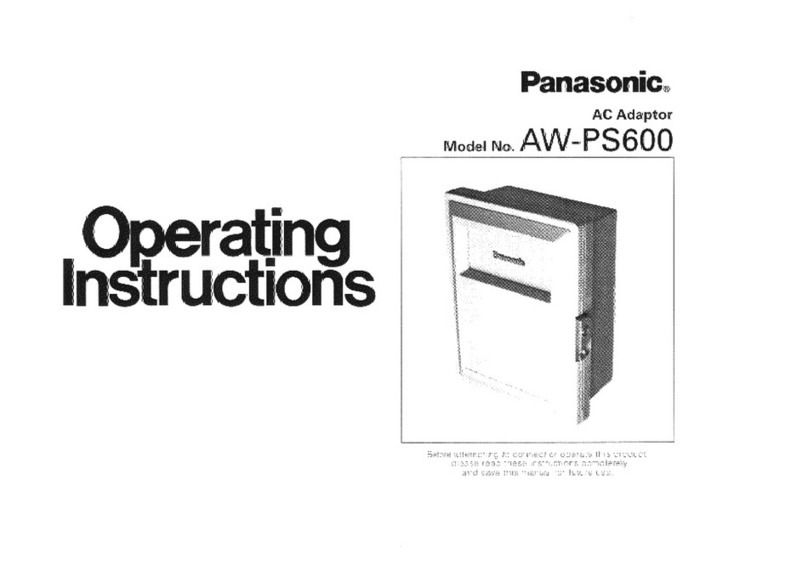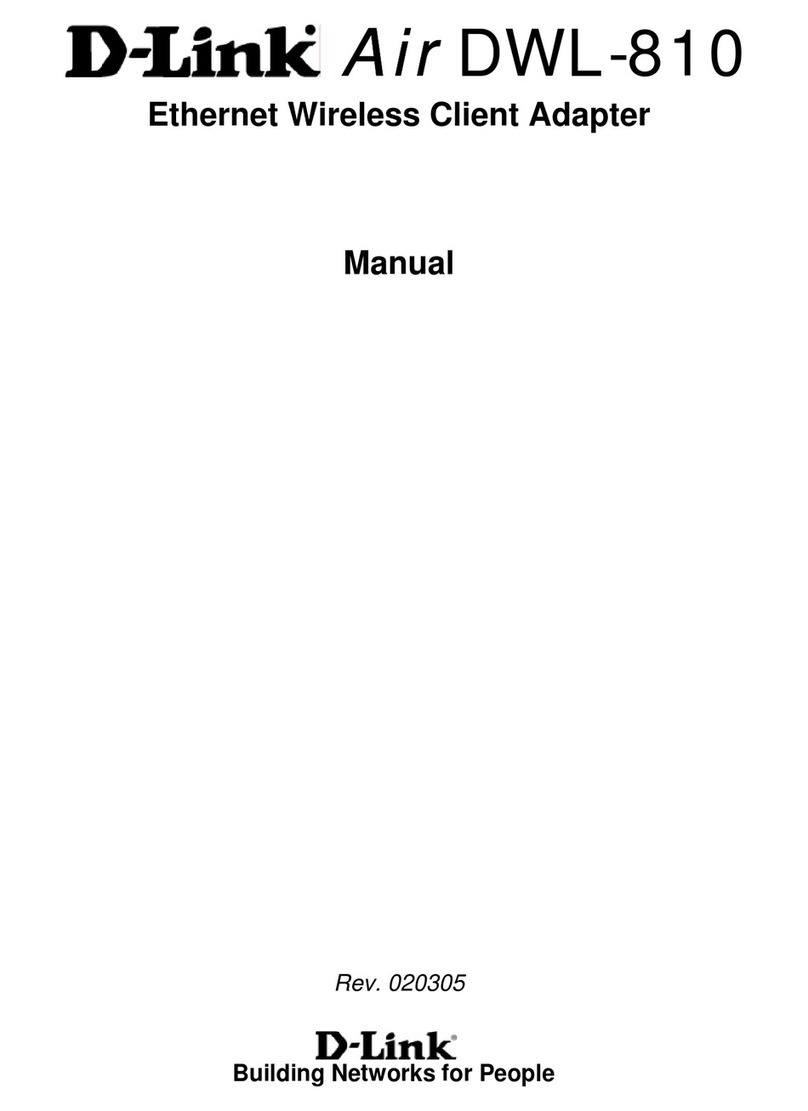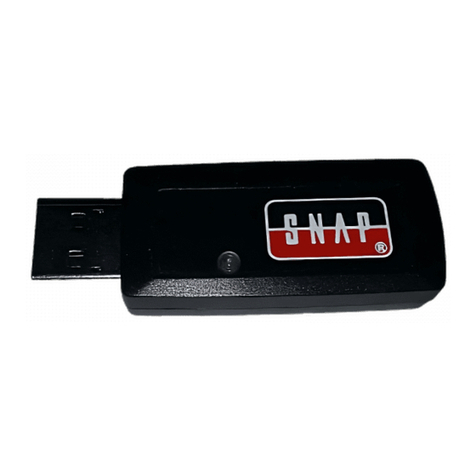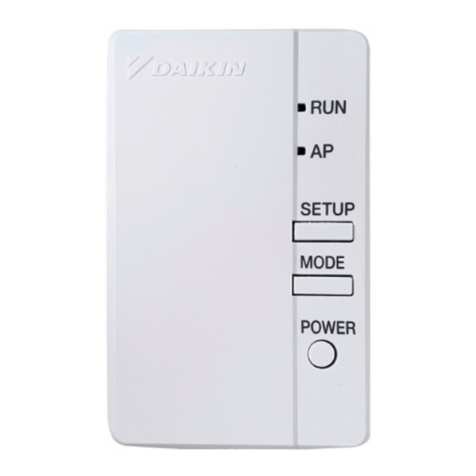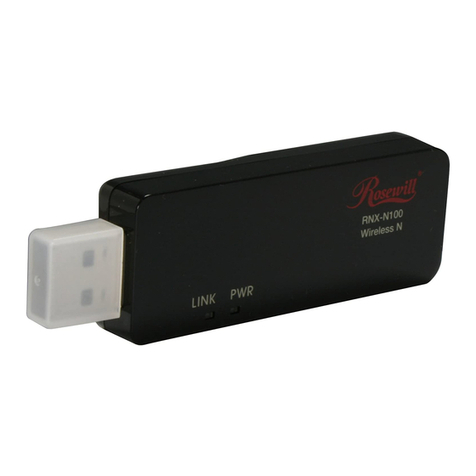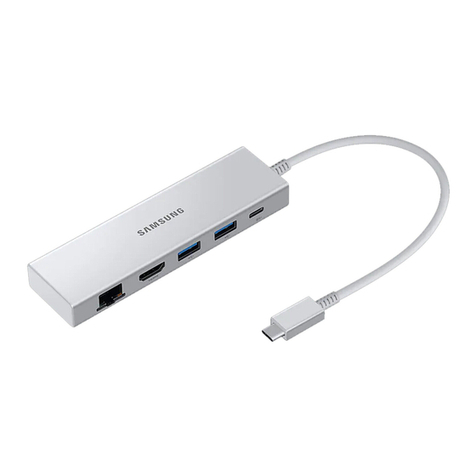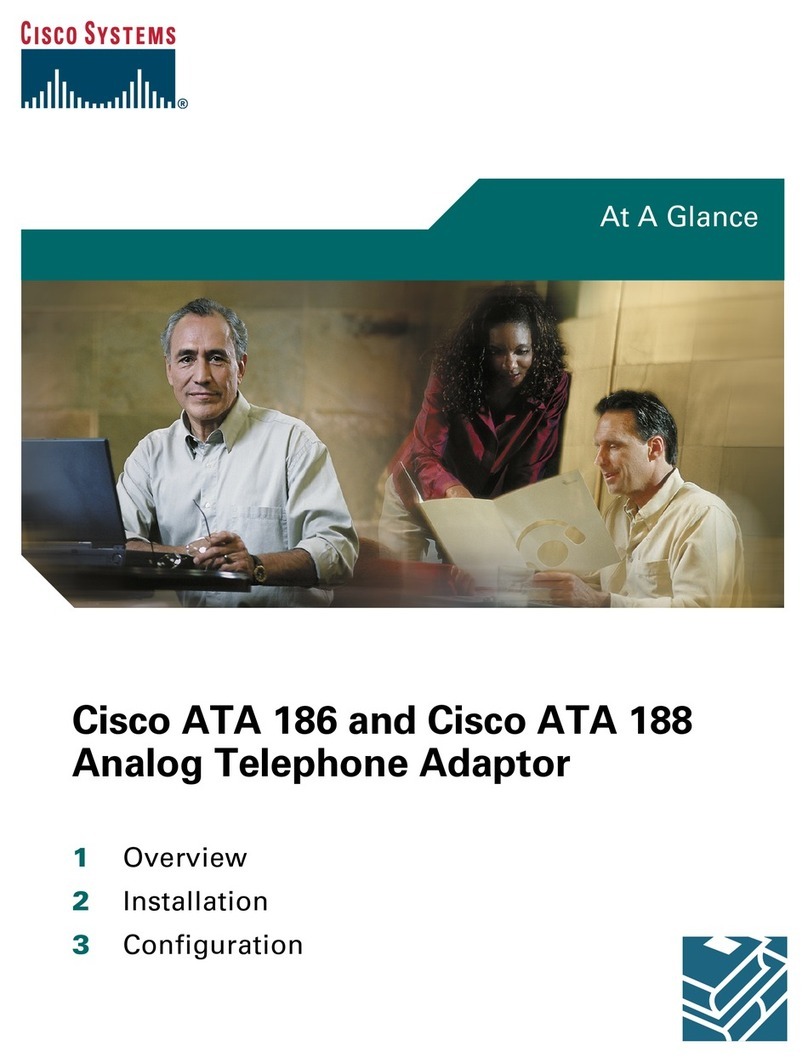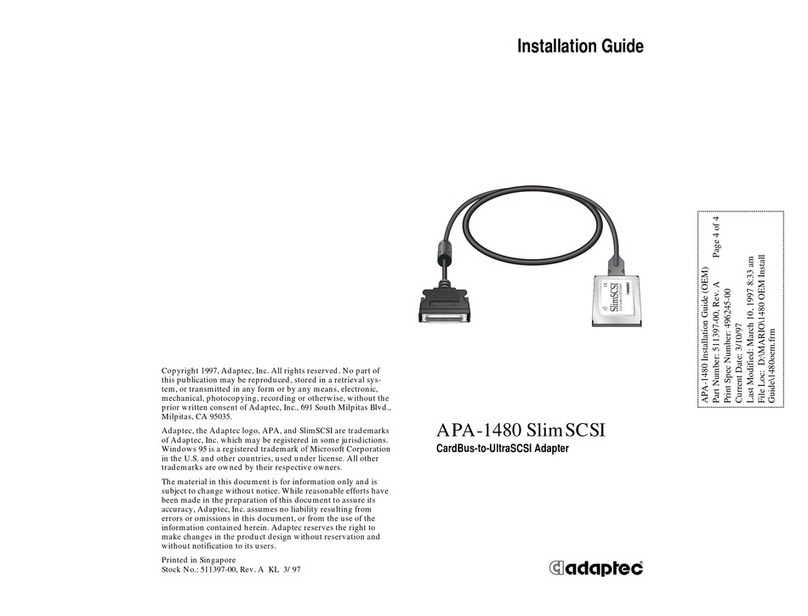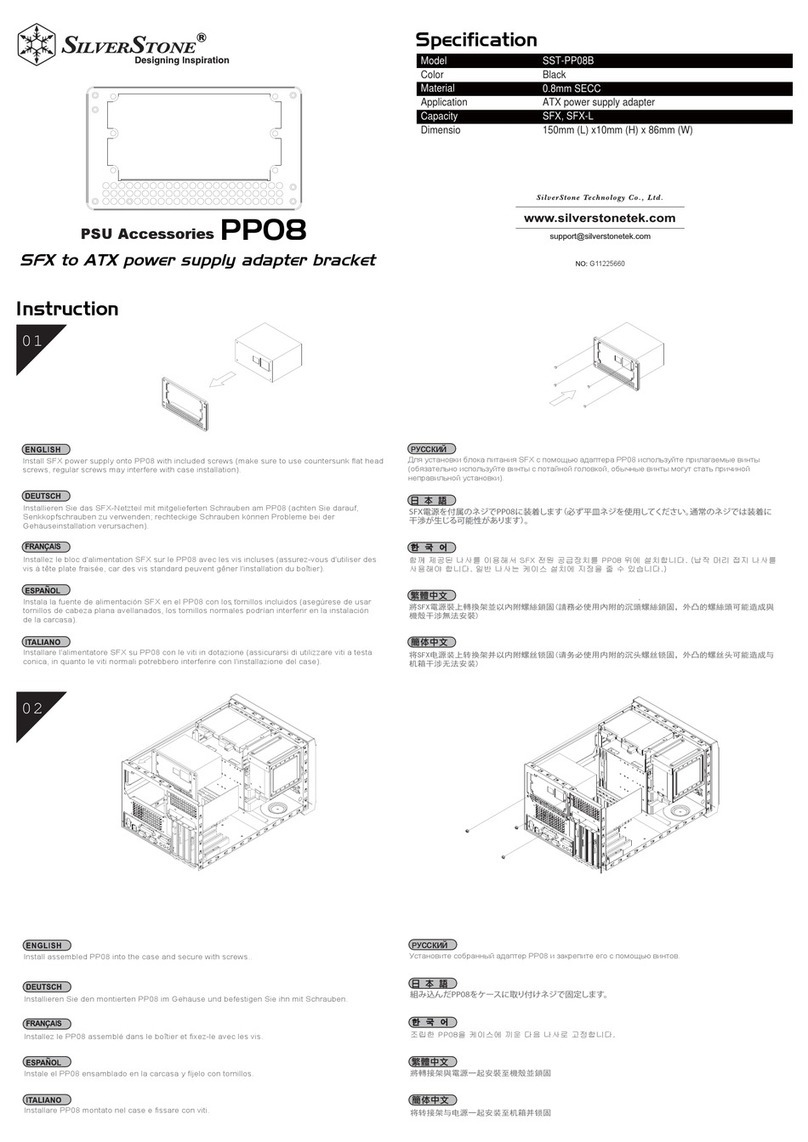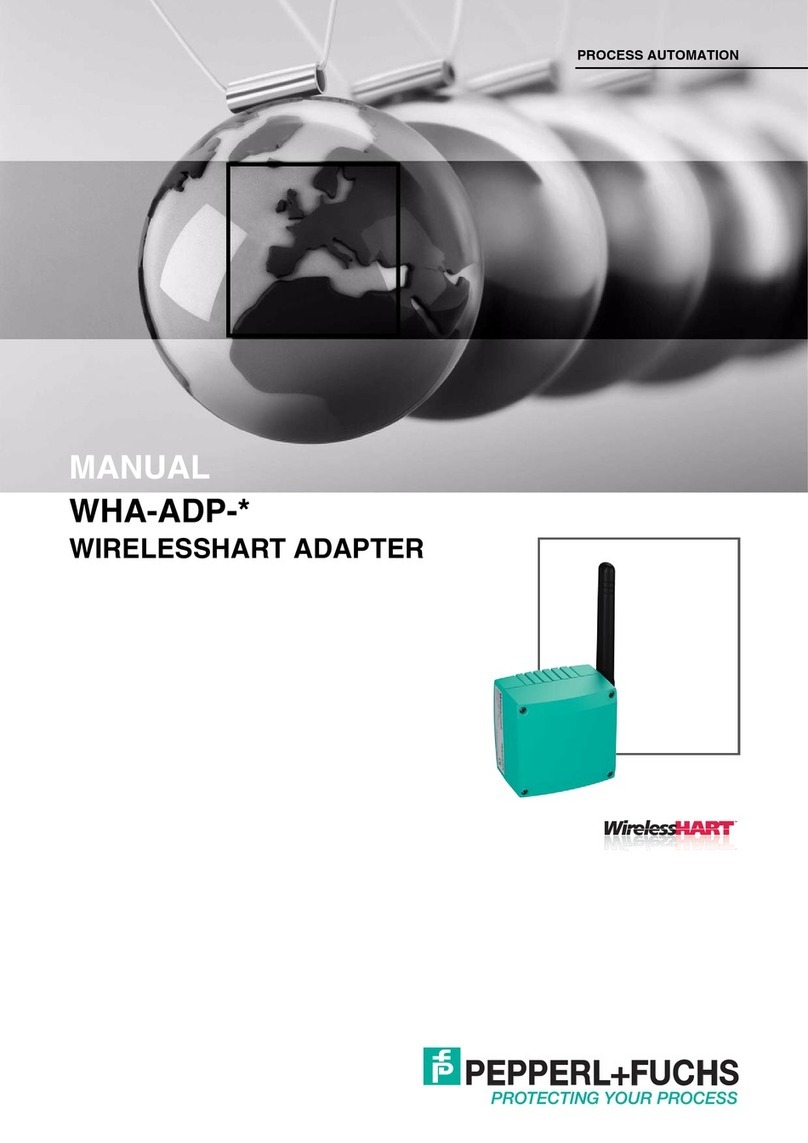TELES TELES.S0/2TR USB-Box User manual

TELES.S0/2TR USB-Box
ISDN Adapter &
ISDN Terminal Adapter
User’s Manual
a

Article number: 560.100.157
The hardware and software described in this publication is protected by internatio-
nal copyright law. Use of the software is intended solely for the legitimate owner of
a copy thereof, after having registered with TELES AG. Unauthorized distribution
or use may result in civil and criminal penalties and will be prosecuted. All rights
reserved by TELES AG.
The information in this publication has been compiled with great attention to detail.
Nonetheless, inaccuracies and typographical errors cannot be entirely avoided.
For this reason, TELES provides this information "as is", without warranty of any
kind, either expressed or implied.
The information and products described herein are subject to change without
notice.
© Copyright 1999 TELES AG Berlin. All rights reserved.
TELES®, IntraSTAR®, Intra*®and iSWITCH®are registered trademarks of TELES
AG. All other trademarks used are the property of their respective owners.

©1999 by TELES AG Berlin, Version 2.00/S0USBTR-e/10.08, Issue: October 1999 Page i
Introduction
1 Introduction ............................................................................................................ 1
1.1 TELES.S0/2TR USB Box Features at a Glance ............................................... 2
1.2 System Requirements ...................................................................................... 4
1.3 Package Contents ............................................................................................ 4
2 Installing the TELES.S0/2TR USB Box ................................................................. 5
2.1 Installation Overview ......................................................................................... 5
2.2 Connecting the TELES.S0/2TR USB Box ........................................................ 5
3 Setting up the TELES.S0/2TR USB Box ............................................................... 6
3.1 Setting the PIN .................................................................................................. 7
3.2 Assigning Phone Numbers (MSN) .................................................................... 7
3.3 Setting Device IDs for Each TELES ISDN Device ............................................ 8
4 TELES.S0/2TR USB Box as Full-featured PBX .................................................... 9
4.1 Setting Flash Time for Analog Telephones ....................................................... 9
4.2 Hold, Transfer and Alternate ........................................................................... 10
4.3 Three-Party Conference Calls ........................................................................ 10
4.4 Comfortable Call Transfer ............................................................................... 11
4.5 Completion of Calls to Busy Subscriber (CCBS) ............................................ 12
4.6 Call Forwarding ............................................................................................... 13
4.6.1 Call Forwarding via Central Office ........................................................... 13
4.6.2 Call Forwarding via USB Box .................................................................. 14
4.7 Call Distribution ............................................................................................... 15
4.8 Sending Codes to a PBX or to the Central Office ........................................... 15
4.9 Blocking .......................................................................................................... 16
4.10 Remote Administration ................................................................................. 17
4.11 Personal Callback ......................................................................................... 18
5 TELES.ISDN Device Manager ............................................................................. 19
5.1 The TELES.ISDN Device Manager User Interface ......................................... 19
5.2 Getting Started ................................................................................................ 19
5.3 Settings for Analog Ports ................................................................................ 20
6 Troubleshooting ................................................................................................... 23
6.1 Setting Service Indicators for Analog Ports .................................................... 24
7 Customer Service ................................................................................................ 25
7.1 Checklist for Hotline Contacts ......................................................................... 26
8 Overview of Analog Ports’ Functions ............................................................ 27
TELES.S0/2TR USB Box - Rear View ....................................................Cover
TELES.S0/2TR USB Box - Front View - LED Display ...........................Cover
Specifications ..........................................................................................Cover
Acoustic Signals .....................................................................................Cover
Contents

Page ii ©1999 by TELES AG Berlin, Version 2.00/S0USBTR-e/10.08, Issue: October 1999
Contents
The TELES.S0/2TR USB box is intended for operation on a Basic Rate Interface.
Please note that the ISDN driver (CAPI) is capable of different D channel proto-
cols. The box’s PBX features, however, are only suited to Euro ISDN (based on a
D channel protocol referred to as DSS1 or ETSI).
The box may not be altered in its construction or its safety features without the ex-
plicit prior consent of the manufacturer. Any alterations exempt the manufacturer
from liability for damages resulting thereby.
Please ensure that no liquids enter the box case. This could cause short circuits or
electric shocks.
Keep smoke, dust, vibrations and moisture from the device. Avoid extreme tem-
peratures, direct sunlight and powerful electromagnetic fields.
Place the box on an even and stable surface, or mount it securely to the wall.
Pictograms
Pictogram Meaning
DReplace receiver
ULift receiver
NKey in call number or any series of numbers
0....9Key in certain number series
PKey in 5-digit PIN
QOK tone
*Star key
#Pound key
RFlash button. Sometimes labeled differently.
GCall in progress
KThree-party conference in progress
For Your Safety

©1999 by TELES AG Berlin, Version 2.00/S0USBTR-e/10.08, Issue: October 1999 Page 1
Introduction
The TELES.S0/2TR USB Box is a combination of ISDN adapter for your PC and
terminal adapter for your analog devices.
As terminal adapter...
... the TELES.S0/2TR USB Box provides you with two ports for analog devices.
This means that you can take advantage of ISDN while still using your traditional
telephones. This feature works whether you use your PC or not. Plus, you have
access to functions that are usually only available to full-featured PBXs.
As ISDN adapter...
... the TELES.S0/2TR USB Box connects your PC to IS-
DN, providing you with the same performance as an inter-
nal TELES.BRI board. The TELES.RVS PowerPack
software includes the programs and interface for PC-sup-
ported telephony, internet access, data transmission, etc.
Simply connect the adapter to your computer’s USB port.
As a member of the TELES.Family ...
... the TELES.S0/2TR USB Box can be
combined with other TELES ISDN devices.
All TELES BRI products exploit a patented
technology that lets you profit from further
possibilities with even more power and
comfort: Though you need no additional
wiring or extra charges, all TELES ISDN
devices connected to the same BRI can
communicate with each other. In contrast to
other manufacturers’ ISDN products, this
technology allows you to transfer calls to and from all your ISDN devices without
paying charges. This is also true for a TELES ISDN device you may have attached
to the box’s ISDN socket, e.g. the full-featured ISDN telephone TELES.FON.
1 Introduction

Page 2 ©1999 by TELES AG Berlin, Version 2.00/S0USBTR-e/10.08, Issue: October 1999
Introduction
General TELES.S0/2TR USB Box Features
• Provides you with the same performance as an internal BRI board. The
TELES.RVS PowerPack software allows you to use all the advantages of PC
supported telephony, internet, data transmission, faxing, etc.
• Plug&Play driver installation when first connected to the PC.
• Hotplugging lets you easily plug the box in and out while your PC is running.
• Features power management.
• Flash-ROM easily updates the firmware without having to replace any hard-
ware components.
• Supports the DSS1 protocol.
• Connects to all analog terminal devices (telephones, fax machines, answering
machine) supporting touchtone dialing (DTMF). Internal connections
between the analog devices are free of charge.
• An additional ISDN device can be attached to one of the box’s ISDN sockets.
Calls between this device and the analog devices are external communica-
tions and are charged. However, thanks to the TELES.Family concept you
can transfer calls to or from this device, thus avoiding charges. This is the
result of a process designed and patented by TELES, which coordinates all
TELES.ISDN terminal devices. Other brands allow call transfer on the same
BRI bus only via parking (for details see Chapter 4.4, page 11).
• Two ISDN channels can be active at the same time. You can make a tele-
phone call and receive a fax or surf the internet at the same time. Or you can
make telephone calls on both analog ports at the same time.
• Several TELES.S0/2TR USB Boxes can be attached to one BRI bus.
• There are two ways to control the analog ports’ functions: from your PC
using the TELES.ISDN Device Manager, or by using the DTMF-capable tel-
ephones attached. If you have a TELES ISDN device connected to the same
BRI please note that different key commands are applicable. Please refer to
the manual delivered with the device or simply use the TELES ISDN Man-
ager.
• 4 LEDs are provided to indicate operating status and analog port usage.
1.1 TELES.S0/2TR USB Box Features at a Glance

©1999 by TELES AG Berlin, Version 2.00/S0USBTR-e/10.08, Issue: October 1999 Page 3
Introduction
Features specific to the analog ports
• Each analog port can be assigned a number of its own (MSN). A third MSN
can be programmed for remote control.
• The flash button on the telephone allows you to set up a call (internal or exter-
nal) while in the course of another one. One party is put on hold and you can
switch back and forth between both parties. You can also transfer an
external call to an extension on the other port without waiting for the called
party to pick up the call. If supported by your ISDN line you can make use of
3 party conference calls.
• Calls can be parked to be picked up from another extension or from an ISDN
line connected to the same ISDN line.
• The TELES.S0/2TR USB Box allows two different approaches to configure
Call forwarding: a) Call forwarding unconditional via the box. This is used
to forward calls immediately to the box’s other analog port or to an external
line. b) Call forwarding via ISDN switch. This feature must be subscribed
with your phone company. As a rule, you can take advantage of three types of
Call forwarding: unconditional, no reply, call forwarding when busy.
•Statistics on all connections and charges analysis are performed in a clear
and simple manner by the TELES ISDN Device Manager.
• The analog ports feature several types of call blocking: To control your tele-
phone bill you can set up a charge account or configure various block types.
Unwanted calls can be rejected.
• When calling a busy phone, do not hang up, but use the callback on busy fea-
ture (CCBS = Completion of calls to busy subscriber).
•Direct Call (or baby call) is the feature that allows a preset number be dialed
automatically by simply lifting the receiver – useful for small children who
are not able to dial numbers.
• To prevent unauthorized use, a PIN is needed for all important functions.
• Some functions can be controlled from a remote location, e.g. you can acti-
vate call forwarding by calling the box. This means that you can always be
reached and therefore miss no important calls.
•Personal Callback: You can allow certain persons to use your outside line.
Use this feature if you want to pay the charges for an employee or a family
member.

Page 4 ©1999 by TELES AG Berlin, Version 2.00/S0USBTR-e/10.08, Issue: October 1999
Introduction
Before installing your TELES.S0/2TR USB Box, check that your computer meets
the following requirements:
• PC equipped with at least a 166 MHz Pentium and 16 MB of RAM
• Windows 98 or Windows 95b OSR 2.1
• Graphics card with at least VGA resolution (800 x 600 pixels, 16 colors)
• Hard disk space: 40 MB
• Your PC must be equipped for USB support:
- Windows support for USB devices must be active. Check for the Universal
serial bus controller category in the Windows Device Manager. You
should see the USB Host Controller and USB Root Hub entries when you
click the plus sign ("+") for this category.
- Windows 98 is fully USB-ready. Under Windows 95b OSR 2.1, you may
need to install the Microsoft USB Supplement (usbsupp.exe). This
supplement is currently included on Windows CDs marked "USB-sup-
port". The installation of this supplement requires you to restart your com-
puter. After restarting, proceed with the TELES.S0/2TR USB Box
installation.
• ISDN line: Point-to-multipoint access or internal BRI provided by a PBX
- To display charges, the ISDN line must support advice of charges.
• TELES.S0/2TR USB Box
• Power supply unit
• ISDN connecting cable with an RJ-45 connector on either end
•USBcable
• User’s manual "TELES.S0/2TR USB Box"
• User’s manual " TELES ISDN Adapter + TELES.RVS PowerPack"
• CD ROM with ISDN driver and TELES.RVS PowerPack applications soft-
ware
1.2 System Requirements
1.3 Package Contents

©1999 by TELES AG Berlin, Version 2.00/S0USBTR-e/10.08, Issue: October 1999 Page 5
Installing the TELES.S0/2TR USB Box
The following steps are necessary to install the TELES.S0/2TR USB Box:
1. Connect the box to the ISDN line and the power supply.
2. Connect the analog devices. If available, connect your ISDN device as well.
After these steps have been completed, you can make and receive calls on the ana-
log devices attached. However, it is advisable to complete the following steps:
3. Connect the TELES.S0/2TR USB Box to the PC’s USB port.
4. Install the ISDN driver software and, if required, the user software
TELES.RVS PowerPack. For instructions refer to the installation manual
"TELES.ISDN Adapter + TELES.RVS PowerPack".
5. Change the PIN required for configuring the analog ports.
6. Assign numbers (MSN).
7. Adjust flash time on your analog telephones.
•Plugthepower supply into the 220V/230V wall outlet. Connect the other
end of the power supply cable to the socket marked 12V. Connect the
TELES.S0/2TR USB Box to the ISDN line with the RJ-45 connector cable
supplied. The TELES.S0/2TR USB Box performs a self-test. Each of the
LEDs lights up briefly. When the test is completed, the red LED lights up,
indicating that the box is operational.
• Connect the analog devices to the two
analog ports on the back of the
TELES.S0/2TR USB Box. These
ports are in the form of 6-pin RJ-11
jacks, according to international
standards. The letters aand bin the
figure mark the pins assigned.
2 Installing the TELES.S0/2TR USB Box
2.1 Installation Overview
2.2 Connecting the TELES.S0/2TR USB Box
Left: RJ-11 connector cable typically
used for analog equipment, such as
telephones, modems, fax machines.
Right: Analog jack on the back of
the box. The letters aand bmark
the pins assigned.

Page 6 ©1999 by TELES AG Berlin, Version 2.00/S0USBTR-e/10.08, Issue: October 1999
Setting up the TELES.S0/2TR USB Box
• An additional ISDN device can be attached to the remaining ISDN jack.
Please note that this is not an extra ISDN port but only an "extension" passed
through from your BRI, similar to a Y connector.
•UsetheUSB cable to connect the box to your PC. The box will automati-
cally be displayed as a new hardware component. Insert your TELES.RVS
PowerPack CD and follow the screen messages to set up the ISDN driver as
described in the installation manual "TELES.ISDN Adapter + TELES.RVS
PowerPack".
There are several ways to program the TELES.S0/2TR USB Box:
A) The easiest way is to program your TELES.S0/2TR USB Box from your PC,
using the TELES.ISDN Device Manager. Please refer to Chapter 5, page 19ff,
for details.
B) Alternatively, use the connected telephones.
- To program the two analog ports, key in the commands listed in Chapter
8, page 27ff. Be sure your analog telephones can generate DTMF tones. If
your telephones are set to the pulse mode, check the manual supplied to see
if you can switch from pulse to tone dialing. Pulse dial phones cannot be
used to program the box. (However, you can use them to make calls). All
commands begin with * and end with #. Be sure your telephones have
these keys.
If a function has been correctly set, you will hear the OK tone (short, regu-
lar tone).
If a function could not be activated, you will hear the error tone (repeti-
tive, piercing tone).
- If you have an ISDN device connected, use the commands described in the
manual supplied with it. If your ISDN device is a TELES product, you can
take advantage of the TELES ISDN Device Manager as well.
C) For the two analog ports, you can also use your answering machine remote
control.
3 Setting up the TELES.S0/2TR USB Box

©1999 by TELES AG Berlin, Version 2.00/S0USBTR-e/10.08, Issue: October 1999 Page 7
Setting up the TELES.S0/2TR USB Box
To configure the analog ports you have to set a PIN. The PIN is a 5-digit
number. When shipped from the factory, the PIN is set to 00000 which allows you
to perform only one configuration command – changing the PIN. For instructions,
please refer to Chapter 8, page 27ff.
The PIN can only be set by using one of the connected analog telephones, not by
the Device Manager. The new PIN must be entered twice, to avoid errors.
Note: Make careful note of the new PIN, because you cannot configure
your box without it. If you lose the PIN, you will have to return
the box to the manufacturer, who will delete the PIN. Costs will
be billed to you.
This PIN is not applicable to the ISDN device you may have connected to your
box. If you use a TELES ISDN product refer to the manual supplied with it.
Your phone company will usually assign you 3 MSNs for a point-to-multipoint
line configured for Euro-ISDN. MSN (Multiple Subscriber Number) is the com-
plete phone number without the local prefix.
To assign phone numbers to the analog ports:
• Each analog port can be assigned a phone number of its own.
• If you do not assign phone numbers to either analog port, all connected ana-
log telephones will ring simultaneously when one of your ISDN line’s
number is being called.
• If you set a phone number to one analog port only, the port without a number
cannot accept incoming calls. Nevertheless, you can configure this port to
ring as well. To activate this mode use the *69*PIN*1#command. This
may be useful if you have not enough phone numbers left for all devices or
applications you want to use over your ISDN line.
• To take advantage of the remote control and Personal CallBack features, one
of your ISDN line’s phone numbers should be reserved for this purpose.
Refer to Chapter 8, page 27ff, for all key combinations needed.
To assign a phone number to the ISDN device:
Refer to the device’s manual for instructions on how to set phone numbers. If you
use a TELES product you can take advantage of the TELES.ISDN Device Man-
ager.
3.1 Setting the PIN
3.2 Assigning Phone Numbers (MSN)

Page 8 ©1999 by TELES AG Berlin, Version 2.00/S0USBTR-e/10.08, Issue: October 1999
Setting up the TELES.S0/2TR USB Box
Device IDs are only necessary if you have several TELES ISDN devices con-
nected to one BRI line and and if you want to take advantage of the functions of-
fered by the TELES.Family patent, i.e.
• comfortable call transfer (see Chapter 4.4, page 11)
• programming devices with the TELES ISDN Device Manager (see Chapter
5.1, page 19ff).
If you only have one TELES ISDN device on the ISDN line and only want to pro-
gram the box using the Device Manager, device IDs are of no relevance. You need
not make any changes.
Each single TELES ISDN device should be assigned a device ID, whether it is at-
tached directly to the ISDN network terminator or to the ISDN socket of your
TELES.S0/2TR USB Box.
The device ID is a one-digit number between 1 and 8. The factory default setting
for every TELES.ISDN device is ID 1.
Note: The device ID you allocate to the box will refer to port 1 only.
Port 2 will automatically be assigned the next ID. As a result, this
ID should be skipped when assigning IDs to other devices.
Like the PIN, the device ID can only be set by using one of the
connected telephones, not by the TELES.ISDN Device Manager.
The box’s device ID is displayed in the title bar of the TELES.IS-
DN Device Manager. In contrast to that, you can neither view nor
edit the second device ID.
Example: If you assign e.g. ID 3 to the box, port 2 is automatically address-
able by ID 4. For a TELES.FON attached to the box, you may
now use any other ID except 3 and 4.
3.3 Setting Device IDs for Each TELES ISDN Device

©1999 by TELES AG Berlin, Version 2.00/S0USBTR-e/10.08, Issue: October 1999 Page 9
TELES.S0/2TR USB Box as Full-featured PBX
This chapter describes the PBX features provided by the two analog ports. All
key combinations for setting these features are summed up in Chapter 8, page
27ff. Functions requiring more explanation are detailed below.
Please be aware that the second ISDN socket of your TELES.S0/2TR USB Box is
only an "extension" of your BRI. Therefore, the box’s PBX functionality will not
cover any additional ISDN device connected to your box or to your ISDN net-
work terminator. However, thanks to the TELES Family concept you can profit
from the Comfortable Call Transfer feature uniquely offered by TELES (see
Chapter 4.4, page 11).
The different hold and transfer functions are initiated via a signal that is transmit-
ted to the system by pressing the flash button. The analog telephones connected
must be equipped with this button. Throughout this manual, the flash button is re-
ferred to as the Rkey. It may be labeled differently on your own phones.
The TELES.S0/2TR USB Box flash time is set to 90 ms. Be sure the connected
analog telephones are configured to the same time.
To adjust the flash time, follow the operating instructions for your phone (there is
no key combination provided by the box). If your phones are set to another mode,
the hold and transfer functions will not be available to you.
4 TELES.S0/2TR USB Box as Full-featured PBX
4.1 Setting Flash Time for Analog Telephones

Page 10 ©1999 by TELES AG Berlin, Version 2.00/S0USBTR-e/10.08, Issue: October 1999
TELES.S0/2TR USB Box as Full-featured PBX
Ask the first party to hold the line. Press the flash key to put the call on hold. Listen
for the dial tone and call another internal or external party. Once the call is an-
swered you will be connected with this party.
You now have the following options:
•Totransfer the call on hold: This option can only be used for passing internal
to external parties or vice versa. This means transferring calls between two
internal parties or two external parties would not work.
•Toalternate between the two parties: Press the flash button to switch back
and forth. Each conversation is private and cannot be heard by the on-hold
party.
•Todisconnect the "active" call do not hang up but press ##R. You can
continue to talk to the party who was on hold at this moment.
•Toterminate either call: Simply hang up.
Your TELES.S0/2TR USB Box allows you to hold a three-way conversation. This
feature can only be used if supported by your ISDN line. Your two counterparts
must be external parties.
To set up a conference:
Ask the first party to hold the line. Press the flash key to put the call on hold. Listen
for the dial tone and dial the third party’s phone number. Once the call is answered
press *# to allow everybody to listen and speak to one another.
While the conference is in progress, you have the following options:
• You can easily switch back and forth between the two parties by pressing
*#. This is useful if you wish a private conversation with one of the them.
• To disconnect the third party, press ##R. You are only connected with the
party on hold.
• To disconnect both calls, simply hang up.
4.2 Hold, Transfer and Alternate
4.3 Three-Party Conference Calls

©1999 by TELES AG Berlin, Version 2.00/S0USBTR-e/10.08, Issue: October 1999 Page 11
TELES.S0/2TR USB Box as Full-featured PBX
If you have other TELES.ISDN devices attached to your ISDN line, e.g. an ISDN
telephone attached
• to the second ISDN port on the box,
• or to your ISDN network terminator,
you can take advantage of a transfer function specially developed by TELES:
Transferring calls to other ISDN terminal devices on the same BRI line. This al-
lows you to transfer calls between your analog telephones and your ISDN tele-
phone without paying any charges.
This function is available to you if each TELES ISDN device has its own device
ID.
To transfer calls from an analog phone (connected to the box) to a TELES
ISDN device (connected to the same ISDN line / to the box):
GYou have a call which you want to transfer.
** Press the star key twice.
N Key in the ID of the TELES ISDN device to which you want to transfer
the call.
When you hear the OK tone, you can put the receiver down. The ISDN device
which you dialed has 60 seconds to take the call.
If you keyed in the wrong device ID, or the line is busy, you will hear the error
tone. You are still connected to the original caller.
If the device you dialed does not take the call, you have 60 seconds to take the
call back by lifting your receiver and keying in *#. Otherwise, the original call-
er will get the busy signal after 60 seconds have elapsed.
To transfer a call from the ISDN phone to the analog phones on the box:
The device manual will tell you how to activate this function. The TELES.FON,
for example, comes with a special key for this purpose. To transfer a call to port 1
of the TELES.S0/2TR USB Box, just dial the box’s ID. To transfer a call to port 2,
dial the box’s ID number plus 1 (for details on device IDs see Chapter 3.3, page 8).
Example: Your box is set to device ID 3. To transfer calls from an ISDN
telephone to port 1 of your box, dial device ID 3. To transfer calls
to port 2, dial device ID 4.
4.4 Comfortable Call Transfer

Page 12 ©1999 by TELES AG Berlin, Version 2.00/S0USBTR-e/10.08, Issue: October 1999
TELES.S0/2TR USB Box as Full-featured PBX
With your TELES.S0/2TR USB Box, you can profit from this feature no matter
whether you have subscribed to CCBS with your phone company. If not sub-
scribed, your box uses an automatic redial function.
To use CCBS with your analog telephones connected to the box:
The number you dial is busy. Do not hang up yet, but press #while you still hear
the busy tone. Then put the receiver down. As soon as the called party is free again
your telephone rings. All you have to do is lift the receiver and you are then con-
nected to the called party.
To deactivate CCBS lift the receiver and press R#.
To use CCBS with an ISDN phone connected to the box:
Your ISDN phone must by capable of CCBS. For instructions refer to the manual
supplied. Most of the TELES ISDN Devices support CCBS. TELES.FON even
has a special button that makes CCBS easy to use.
4.5 Completion of Calls to Busy Subscriber (CCBS)

©1999 by TELES AG Berlin, Version 2.00/S0USBTR-e/10.08, Issue: October 1999 Page 13
TELES.S0/2TR USB Box as Full-featured PBX
To set Call Forwarding you can either
• take advantage of the functions integrated into your TELES.S0/2TR USB
Box (see Chapter 4.6.2, page 14)
• or use the service provided by your central office. This is usually based on
two different approaches depending on the standards used by your phone
company:
- Euro-ISDN standard (see Chapter 4.6.1, page 13)
- national standards (see Chapter 4.8, page 15)
Each option requires different codes to activate and deactivate call forwarding.
Your TELES.S0/2TR USB Box complies with Euro-ISDN and supports a variety
of national call forwarding standards, allowing you to benefit from either ap-
proach.
In contrast to call forwarding by the box, this service needs to be activated for each
of your ISDN line’s call numbers. This gives you the flexibility to use it for any
device connected to your BRI. Some phone companies offer voicebox services
which can only be used in conjunction with call forwarding via the central office.
Having call forwardings switched through your central office keeps free your own
B-channels. On the other hand, subscription costs and forwarding charges may be
incurred. In contrast to call forwarding via the TELES.S0/2TR USB Box the serv-
ice cannot be controlled from remote locations.
The type of call forwarding - if at all - supported by the ISDN line, depends on the
services the carrier offers. Your box supports the following CF types:
• Unconditional call forwarding (CFU) – forwards calls immediately
• Call forwarding no reply (CFNR) – forwards calls if no one answers the
phone after a certain number of rings
• Call forwarding when busy (CFB) – forwards calls if your line is busy.
For the Euro ISDN compliant type of call forwarding use the codes ranging from
*31* to *36*as listed in Chapter 8, page 27. To avail of national variations,
follow the instructions outlined in Chapter 4.8, page 15.
4.6 Call Forwarding
4.6.1 Call Forwarding via Central Office

Page 14 ©1999 by TELES AG Berlin, Version 2.00/S0USBTR-e/10.08, Issue: October 1999
TELES.S0/2TR USB Box as Full-featured PBX
You may want to forward calls even though you haven’t subscribed to call for-
warding with your phone company. To do so, simply use the call forwarding fea-
ture provided by your USB box. Note that the TELES.S0/2TR USB Box supports
only the unconditional type of call forwarding (CFU), i.e. all calls are forwarded
immediately to the other number.
If you know that the phones on a port
will not be attended for some time,
you can have the calls forwarded im-
mediately to another phone. The
phones originally dialed do not ring.
Note that both B-channels are used
while a call is being forwarded. The
connection set up to the CFU destina-
tion will be charged to your ISDN line.
The TELES.S0/2TR USB Box offers two ways to set CFU:
A) Enter source and destination number. This function requires you to key in
the complete phone numbers and the box’s PIN. Therefore, it is ideally
suited for remote control from the public network. Key combination:
*06*PIN*source*destination#.
B) Only set the destination number. Applicable only to the port on which you
set the function. Destination may be an external phone or just the other port’s
number. Key combinations:
*07*destination#
*07**port number#
To delete the destination enter the same command without entering a destination.
(applies to A and B).
You also have the option of simply activating or deactivating call forwarding.
After you have set the destination, use the *08*1or 0key combination to ac-
tivate/deactivate the function. This applies to both types of call forwarding.
4.6.2 Call Forwarding via USB Box

©1999 by TELES AG Berlin, Version 2.00/S0USBTR-e/10.08, Issue: October 1999 Page 15
TELES.S0/2TR USB Box as Full-featured PBX
You can program your TELES.S0/2TR USB Box to have incoming calls ring on
both analog ports, no matter which of the two ports is called. Set this function on
the analog port whose calls are to be forwarded.
Observe the following instructions only if you wish to
• set functions in a larger PBX to which your TELES.S0/2TR USB Box is con-
nected
• avail of any central office service that may be controlled by national codes.
To quit the box’s command level, lift the receiver and press the #button. You
can now enter any command specific to your PBX or local central office. The table
below lists some typical local switchboard commands widely used in many Euro-
pean countries.
Common national codes used in several European countries
*21*CFU
*61*CFNR
*67*CFB
Netherlands
*210*CFU
*610*CFNR
*670*CFB
*670*0842333 CFNR to voicebox
Contact your carrier to find out which other supplementary services are available
and which codes are actually needed. For call forwarding, for example, ask wheth-
er you can use the steps listed above, or whether your carrier operates with the
Euro ISDN procedures outlined in Chapter 4.6.1, page 13.
4.7 Call Distribution
4.8 Sending Codes to a PBX or to the Central Office

Page 16 ©1999 by TELES AG Berlin, Version 2.00/S0USBTR-e/10.08, Issue: October 1999
TELES.S0/2TR USB Box as Full-featured PBX
The TELES.S0/2TR USB Box supports the following types of blocking, which
can be set for the analog ports. Please refer to Chapter 8, page 27ff, for key com-
binations, or go to Chapter 5, page 19ff, for information on how to set functions
using the TELES.ISDN Device Manager.
4.9 Blocking
Blocks on outgoing calls
Type Meaning
Global block When set, port 1 and 2 are blocked. The preset numbers, 110
and 112, and five other numbers of your choice are exempt
from this block and can still be dialed.
Internal calls between the ports are not affected.
Partial Block When set, port 1 and 2 are blocked. Used to block certain
numbers: e.g. 0 for long-distance calls, 00 for international
calls, or toll service numbers. A maximum of 5 numbers/series
of numbers can be blocked.
Internal calls between the ports are not affected.
Charge account When set, port 1 and 2 are blocked. Allows calls up to a preset
limit of units only. As soon as the limit is reached, both ports
are totally blocked (except for 110 and 112).
Your ISDN line must be able to transmit charge information
(AOC = Advice of charges), if you want to use the charge
account feature.
Internal calls between the ports are not affected because they
are free.
To set up the account, simply determine the number of charge
units you want to allow (max. 99999 units). If you set this at 0,
the charge account is turned off.
Direct Call (some-
times referred to
as Baby Call)
Can be set individually for each port. When you lift the
receiver a preset number will be automatically dialed. A spe-
cial dial tone is played for 3 seconds before the call is placed.
To deactivate, enter the command within the 3 sec.
Blocks on incoming and outgoing calls
Total block Can be set individually for each port. Blocks all internal and
external calls incl 110 and 112.
Blocks on incoming calls
Protection against
unwanted calls
Can be set individually for each port. Rejects calls made from
certain, preset numbers. The caller hears the busy signal. This
can only function if the calling number is transmitted.
On each port, you can block calls from up to 5 unwanted num-
bers. This function is deactivated if no numbers are entered.
Table of contents
